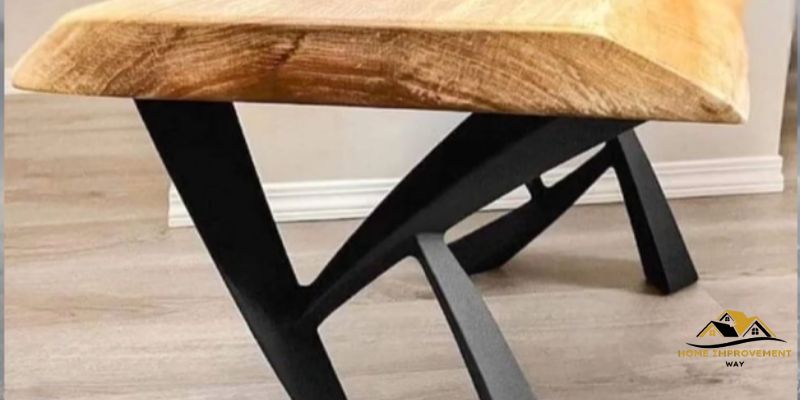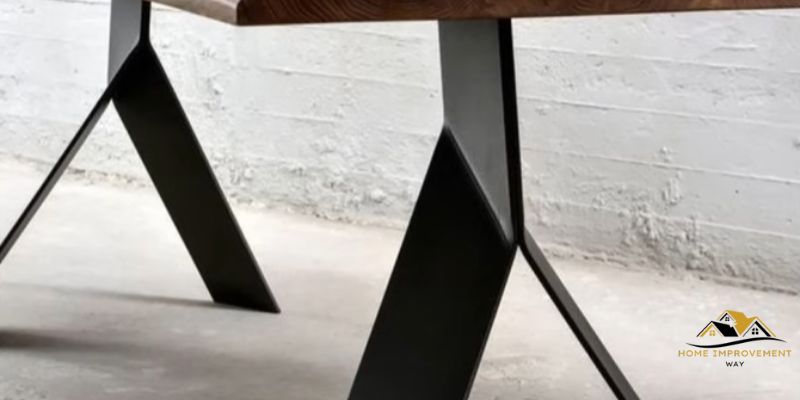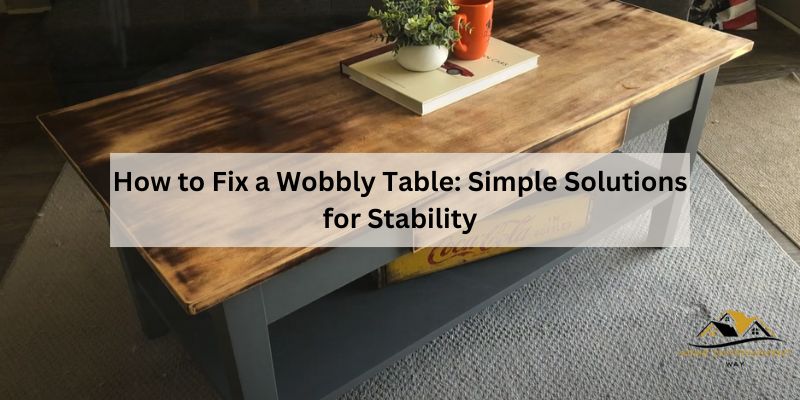To fix a wobbly table, adjust the table legs or add levelers for stability. A wobbly table can be a frustrating issue, causing spills and an unstable surface.
However, fixing a wobbly table is relatively simple. The first step is to check the table legs to ensure they are securely tightened. If they are loose, tighten them using a wrench or screwdriver. If the table still wobbles, consider adding levelers to the bottom of the legs.
Levelers are adjustable feet that can be screwed in or out to stabilize the table. By addressing these common causes, you can easily fix a wobbly table and ensure a sturdy surface for meals and activities.
Step-by-step Solutions
If you have ever sat at a wobbly table, you know how frustrating it can be. Thankfully, fixing a wobbly table is usually a simple task that you can do yourself. In this step-by-step guide, we will walk you through the different solutions to fix a wobbly table. Whether you need to adjust the table legs, use leveling shims, or add furniture pads, we have got you covered.

Adjusting Table Legs
If your table has adjustable legs, this is the first solution you should try. Start by flipping the table over so that the legs are accessible. Look for any adjustable screws or brackets near the bottom of the table legs. Using a screwdriver or wrench, turn the screws or loosen the brackets to adjust the table legs to the desired height. Keep testing the stability of the table as you make adjustments until it no longer wobbles.
Using Leveling Shims
If your table does not have adjustable legs or if adjusting the legs didn’t solve the problem, leveling shims can help stabilize the table. Leveling shims are small wedges that can be placed under the table legs to even out any uneven surfaces. To use leveling shims, follow these steps:
- Flip the table over so that the legs are accessible.
- Identify the wobbly leg(s) and determine the area that needs to be leveled.
- Place the flat side of the leveling shim against the floor and the tapered side under the wobbly leg.
- Gently tap the shim with a hammer until the table feels stable.
- If necessary, add additional shims or adjust their position until the table is completely level.
- Once the table is stable, trim any excess shim material using a utility knife.
Adding Furniture Pads
If adjusting the table legs or using leveling shims didn’t solve the wobbling issue, adding furniture pads can provide extra stability. Furniture pads are commonly made of felt or rubber and can be easily attached to the bottom of the table legs. Follow these steps to add furniture pads:
- Clean the bottom of the table legs to remove any dirt or debris.
- Peel off the backing of the furniture pads to expose the adhesive side.
- Stick the furniture pads firmly onto the bottom of each table leg.
- Press down on the pads to make sure they adhere properly.
- Flip the table back over and test its stability. The furniture pads should prevent any wobbling.
By following these step-by-step solutions, you can easily fix a wobbly table. Whether you need to adjust the table legs, use leveling shims, or add furniture pads, these simple fixes will have your table stable and steady in no time.
Preventative Measures
When it comes to fixing a wobbly table, prevention is the key. By implementing a few simple measures, you can save yourself the hassle of dealing with a wobbly table in the first place. In this section, we will discuss some preventative measures that can help you maintain a stable table.
Regular Maintenance
Maintenance plays a vital role in ensuring the longevity and stability of your table. By taking a proactive approach to maintenance, you can prevent your table from becoming wobbly in the first place. Here are a few maintenance tips to keep in mind:
- Regularly inspect your table legs for any signs of wear and tear. Look for loose bolts or screws that may need tightening.
- Check the stability of the table on a regular basis by gently rocking it from side to side. If you notice any wobbling, address the issue immediately.
- Keep your table clean and free from dust and debris. Dust buildup can affect the stability of the table, so wipe it down regularly.
- Consider applying a protective coating to the table legs to prevent damage from moisture or pests.

Choosing Stable Table Designs
When selecting a table, it’s essential to consider the design and construction, as this can greatly impact its stability. Opting for a stable table design from the get-go can save you from dealing with wobbly tables down the line. Here are some factors to consider when choosing a stable table:
- Look for tables with sturdy, solid wood or metal legs. These materials provide better stability compared to tables with thin or flimsy legs.
- Consider the weight distribution of the table. Tables with a wider base will generally be more stable than those with a narrow base.
- Pay attention to the overall craftsmanship and construction quality of the table. Ensure that the joints and connections are secure and well-built.
Using Table Anchors
In addition to regular maintenance and choosing a stable design, using table anchors can be an effective way to prevent wobbling. Table anchors are devices that secure the table legs to the floor or wall, providing extra stability. Here are some popular table anchoring methods:
| Table Anchoring Method | Description |
|---|---|
| Bolted Anchors | Bolts or screws are used to attach the table legs to the floor or wall, preventing any movement or wobbling. |
| Cable Anchors | Steel cables are secured to the table legs and anchored to the floor or wall, providing stability without the need for drilling. |
| Adhesive Anchors | Strong adhesive pads are attached to the bottom of the table legs, preventing sliding or wobbling. |
Using table anchors can give you the peace of mind that your table will remain stable and wobble-free even during heavy use.
Conclusion
Fixing a wobbly table is a simple task that can be easily accomplished with a few basic steps. By identifying the cause of the wobble, such as uneven legs or loose joints, and implementing the appropriate solutions, such as using shims or tightening screws, you can restore stability to your table.
Remember to regularly check and maintain your table to prevent future wobbling issues. With these tips, you can enjoy a sturdy and level dining experience.


